SUBWAY DIGGING – GRAND ARMY PLAZA (1914)
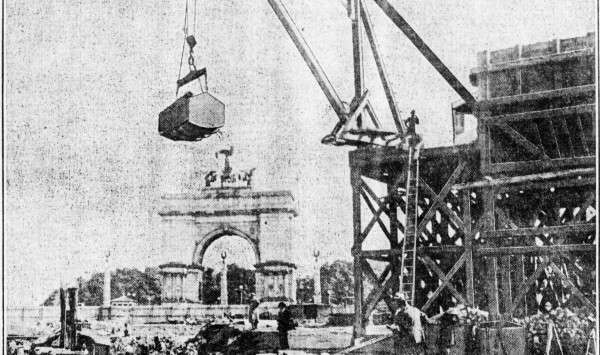
“Dirt is beginning to fly with telling effect in the excavations for the extension of the subway through Flatbush Avenue and out Eastern parkway,” noted the Brooklyn Daily Eagle in their 30 August 1914 edition. “The Above picture shows the big steam shovel at work close to the sailors and soldiers Monument at the Plaza of Prospect Park. Which is seen in the background. This excavation of the present subway will be constructed faster than the Fourth Avenue line has been because there are neither troubles about obtaining title to abutting lands nor the physical difficulties which reset the Fulton Street section of the Fourth Avenue line.” Follow @BrownstoneDetec ———————————————————————————————————————– The Brownstone Detectives The story you have just read was composed from extensive historical research conducted by The Brownstone Detectives. Our clients commission us to investigate the history of their – or their clients’ – historic properties. From our findings, we produce their very own hardbound House History Books. Our books are professionally written and laid out, containing illustrated and colorful narratives that bring the history of any house to life. Contact us today to begin discovering the history of your home.
The Reincarnation of Teddy Roosevelt (1912)

******************************************************************************************************************************** Brownstone Detectives investigates the history of our clients’ homes. The story you are about to read was composed from research conducted in the course of one of those investigations. Do you know the history of YOUR house? ******************************************************************************************************************************** 1 April 1912 – Brooklyn, N.Y. – A well-dressed man appeared in Brooklyn Police Headquarters two hours before sunrise on the 1st of April and, after introducing himself as the reincarnation of Theodore Roosevelt, “promptly dismissed all the lieutenants, detectives and policemen in the structure from the Police Department. “What appeared to be a merry jest on the part of the stranger was enjoyed until he attempted by rather progressive and aggressive tactics to yank some of the lieutenants out of the chairs and hurl them into the street in order to show his word must be obeyed,” The Evening Telegram of 1 April 1912 observed. “It then dawned on the smiling lieutenants, detectives and policemen that the reincarnation of the Rough Rider was not in any sense an April Fool joker.” “Teddy” – or Joseph Condon, of No. 142 Atlantic Avenue – was evidently very much under the impression, though, that he was – if not Theodore Roosevelt, himself – the reincarnation of same. “Roosevelt” thereupon imposed a three months’ fine on Policeman Franklin and then assigned him to Tottenville, Staten Island. When Franklin asked “Teddy” to show him the way there, Condon said he would not go until the dismissed lieutenants, detectives and policemen had left the building. After […]
DID YOUR BROOKLYN STREET FLOOD? (1912)
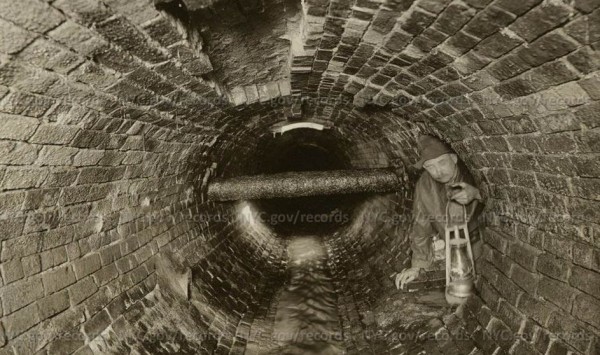
******************************************************************************************************************************** Brownstone Detectives investigates the history of our clients’ homes. The story you are about to read was composed from research conducted in the course of one of those investigations. Do you know the history of YOUR house? ******************************************************************************************************************************** By 1912, Brooklyn was drowning in rain water. The borough, by then, had installed so many more miles of cobblestone, macadam, and otherwise improved roads – than at any time in its past – that many of its streets would flood at the very hint of precipitation. In 1903, for example, the flooding was so bad that the Brooklyn Daily Eagle reported that “All the residences along Hancock, McDonough, Macon, Decatur, Bainbridge and Chauncey Streets were so flooded that residents on the ground floor apartments discovered upon waking that they were forced to go to the second floors to escape the waters.” The paths in Saratoga Park, according to one newspaper account, “had become running streams and benches were floating about.” The nearby Putnam and Halsey streetcars stopped running, as “it was impossible to take on any passengers, as the water was as high as the seats.” Thus, there finally came such an outcry from residents, who lived on the streets most prone to flooding, that the City decided to introduce more sewer lines to catch that water. At that time, to get an idea of what they were dealing with, the city sent out a small army of surveyors to gauge the lower lying areas of the city, so that […]
THE BLOOD BUBBLING IN SARATOGA FIELD
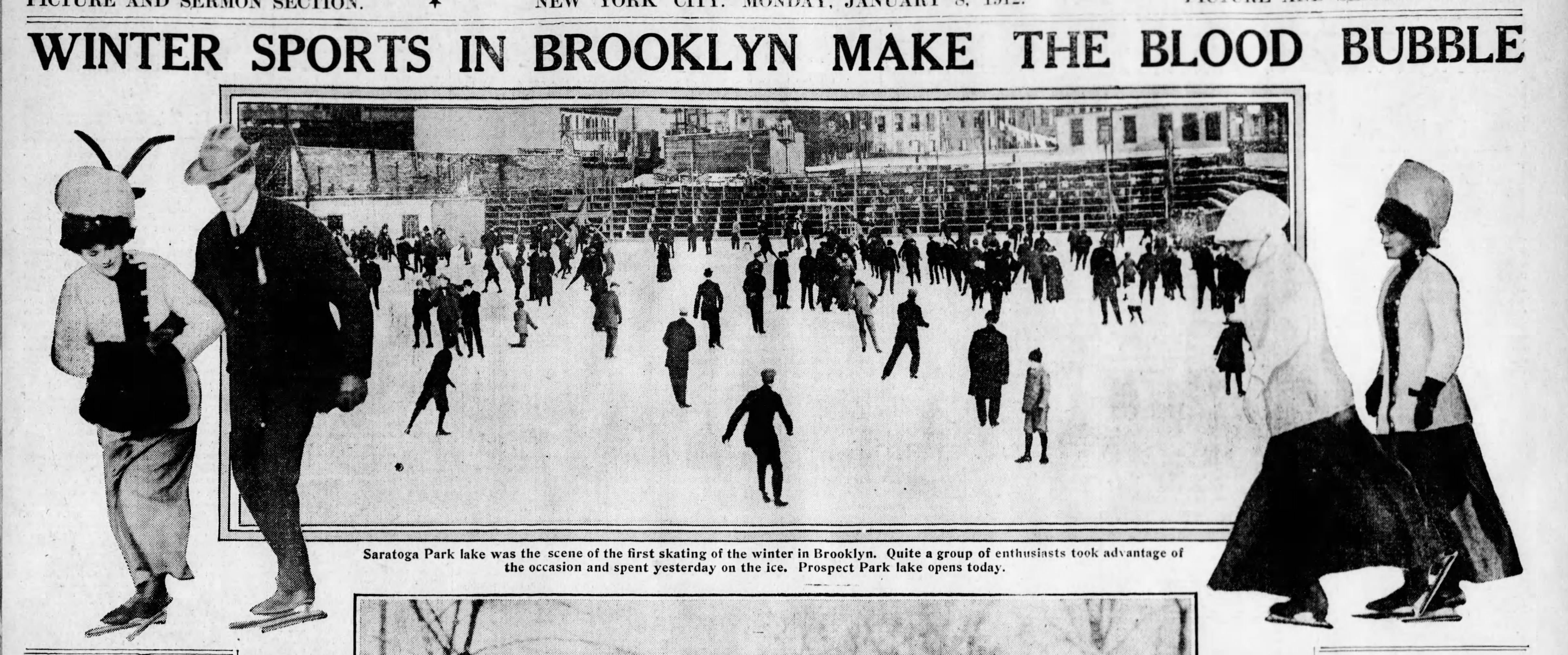
(The picture above shows one of the last years – 1912 – that Saratoga Field was used for skating – or any sports, for that matter – as the entire lot would be developed later that year. The image shows the “first skating” of 1912 in Saratoga Fields. Brooklyn Daily Eagle, Mon., 8 January 1912.) After Saratoga Park was built, the block due east of it – formerly used as a the horse market which sat across the street from the Halsey streetcar stables – became know as Saratoga Fields. This large lot which abutted Broadway, Halsey and Macon, became the stand-in location for circuses through about 1905, and then for assorted sporting events afterwards through early 1912. Because of its proximity to Saratoga Park, though, for a number of years after the park’s construction, Saratoga Field continued to be referred to as Saratoga Park. Run by the Saratoga Amusement Company (for circuses and assorted sports from the early 1890s), they had two main draws, from the people living in the community, to pay the rent. In the winter, they provided skating facilities to the masses, by flooding the field and making a huge outdoor skating rink, which was extremely popular throughout the winter. In the summer, the company improved the lot for use by semi-professional baseball teams, which flourished in this part of Brooklyn. There were countless ball teams from the area which vied to defeat one another on a daily basis – and the competitions were covered keenly […]
THE KING OF SKATS IN SARATOGA PARK (1904)
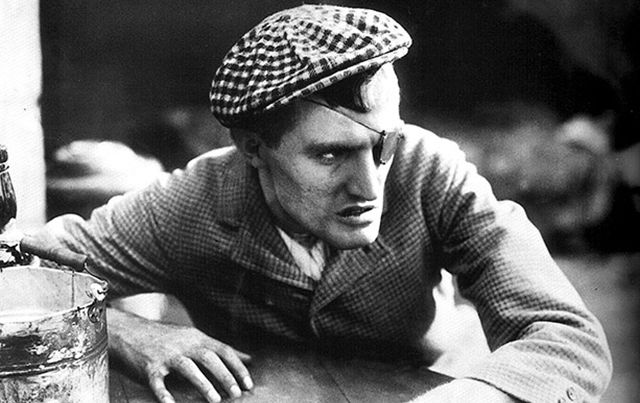
******************************************************************************************************************************** Brownstone Detectives investigates the history of our clients’ homes. The story you are about to read was composed from research conducted in the course of one of those investigations. Do you know the history of YOUR house? ******************************************************************************************************************************** Starting around 1904-1905, Saratoga Park began to develop a sinister reputation, as young men began using it for the purposes of selling illegal narcotics, assaulting park-goers, and simply loafing about and insulting anyone who walked into the park. This was a new phenomenon to the people of the district who did not understand how or why the neighborhood children had begun to disrespect their elders in such a way. One article of the time blamed the parents as much as the boys. They interpreted the occurences as the acts of disaffected sons of respectable families who had little to do with their time, were not forced to take responsibility for their actions, and could not be held chargeable by the police because their parents, who were influential, did not want their sons’ names in the papers: “These young men were night hawks. Sons of respectable, but indulgent, parents, they did about as they liked. They worked always in small groups and gloried in the thought that they could lick any cop which came their way. The groups would assemble on some street corner near the park and use insulting language to girls and women passing.” An indication of what was to come played out in the newspapers between 1905 and 1909, […]
THE BROOKLYN BARBER WHO BURGLED (1904)
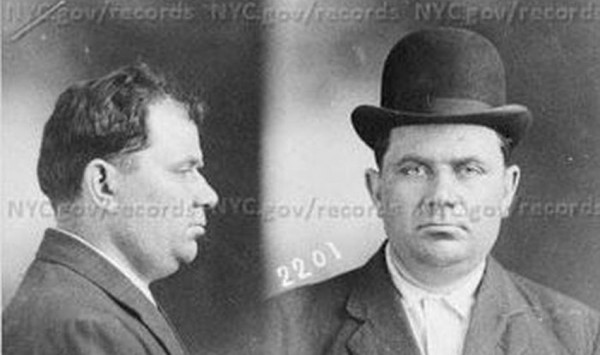
******************************************************************************************************************************** Brownstone Detectives investigates the history of our clients’ homes. The story you are about to read was composed from research conducted in the course of one of those investigations. ******************************************************************************************************************************** Abe Miller was fond of burglary. You might say that it was in his bones. He could not resist it any more than a child could resist candied apples at the fair. He burgled countless Brooklyn and Manhattan homes – more, certainly, than he was ever tried and convicted for – crossing the North River, at times, to burgle still more in New Jersey. Miller, aka Abram Miller, aka Abram Skudden, aka Abe Skudin, &c., &c., &c…was a burglar, though, of little note. As his life of crime ran from the early 20th century through 1940, he had been caught, convicted, and sentenced many times over. But he never reformed. GETTING MARRIED, ARRESTED, & DRAFTED Researching people who are long dead is like putting together the pieces of a puzzle that you find between the cushions of a couch – the pieces are a little dusty, some are broken, and usually they are not all there. In the end, if you do not have the puzzle’s box top, you are left to guess at what the whole picture looks like. This was the case with “Abe Miller.” THE PART ABOUT GETTING “MARRIED” & “DRAFTED” Miller first shows up in government records in 1904 when he married Lena Silverman 14 August on Manhattan. Both were from Russia, the two remaining […]
BENSONHURST BOY EATEN BY LIONS (1914)
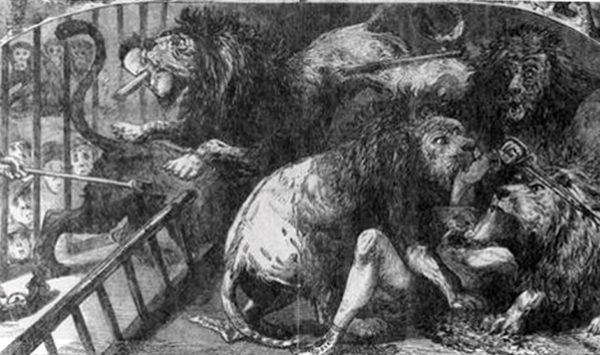
******************************************************************************************************************************** Brownstone Detectives investigates the history of our clients’ homes. The story you are about to read was composed from research conducted in the course of one of those investigations. Do you know the history of YOUR house? ******************************************************************************************************************************** Most people who hear about lions attacking, mauling, and killing human beings envision these violent scenes taking place in the natural habitat of these beasts where they roamed and hunted prey. But the country was mystified by a story that came out a little more than 100 years ago about just such a lion assault – taking place in Chicago. DAREDEVIL DIETRICH AND THE SIX LIONS The son of a wealthy Bensonhurst architect, Emerson D. Dietrich was a graduate of Erasmus High School. He had lived with his parents and his three brothers at 8642 Bay Parkway until he had joined the circus just six months prior to his death. Dietrich, it was learned, had wanted to be near the lions, of which he was fond, and so he had become the manager of Madame Adgie Castillo, the lion trainer. Dietrich, 24, had lived a daredevil’s life, according to his father, who spoke to the Brooklyn Daily Eagle the day after the attack. “He won medals of every sort, but he joined no society,” the elder Dietrich said, “for he was a society in himself. “He had hundreds of friends who came to see him. He didn’t need a society. Then in 1909, he graduated and, for the first time we, […]
WHEN DID SOCKER COME TO BRUKLYN? (1907)
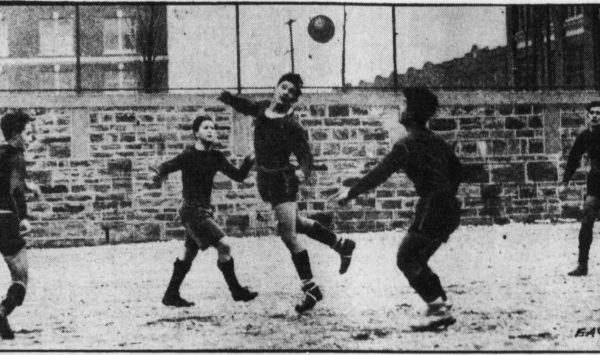
“Socker” wasn’t taken seriously in the U.S. at least until the 1950s or so. Well, I suppose “seriously” is a relative term, as some would say even today that the sport is still not given its fair due. A sport that is played by more people across the world than any other, it was eventually bound to take root in the U.S. With the number of immigrants in the greater New York City area it happened quicker than in other parts of the country. The game took root first at high school, colleges, and in social leagues throughout the city before it became a professional draw. The first mention of “soccer foot ball” in the Brooklyn Daily Eagle, was in 1899 in a story about an Orange Free State club traveling to the U.S. for an exposition. By 1907, there were signs that the game would take in Brooklyn as the Crescent A.C. Socker Team was founded. Crescent AC was the sole Brooklyn club for several years until other parts of the borough began fielding their own teams – such as the Montclair Athletic Club, the Bensonhurst Field Club, and the Staten Island C. & F. C. After this, as more teams were built and more and more Brooklynites were exposed to the game, the sport slowly discovered acceptance and, in some areas, even took on more of an air of respectability. Here are a few pics from down the ages. AMATEUR – 1907 SEMI-PRO – 1912 HIGH SCHOOL – […]
THE BOY WHO COULDN’T MEND (1914)
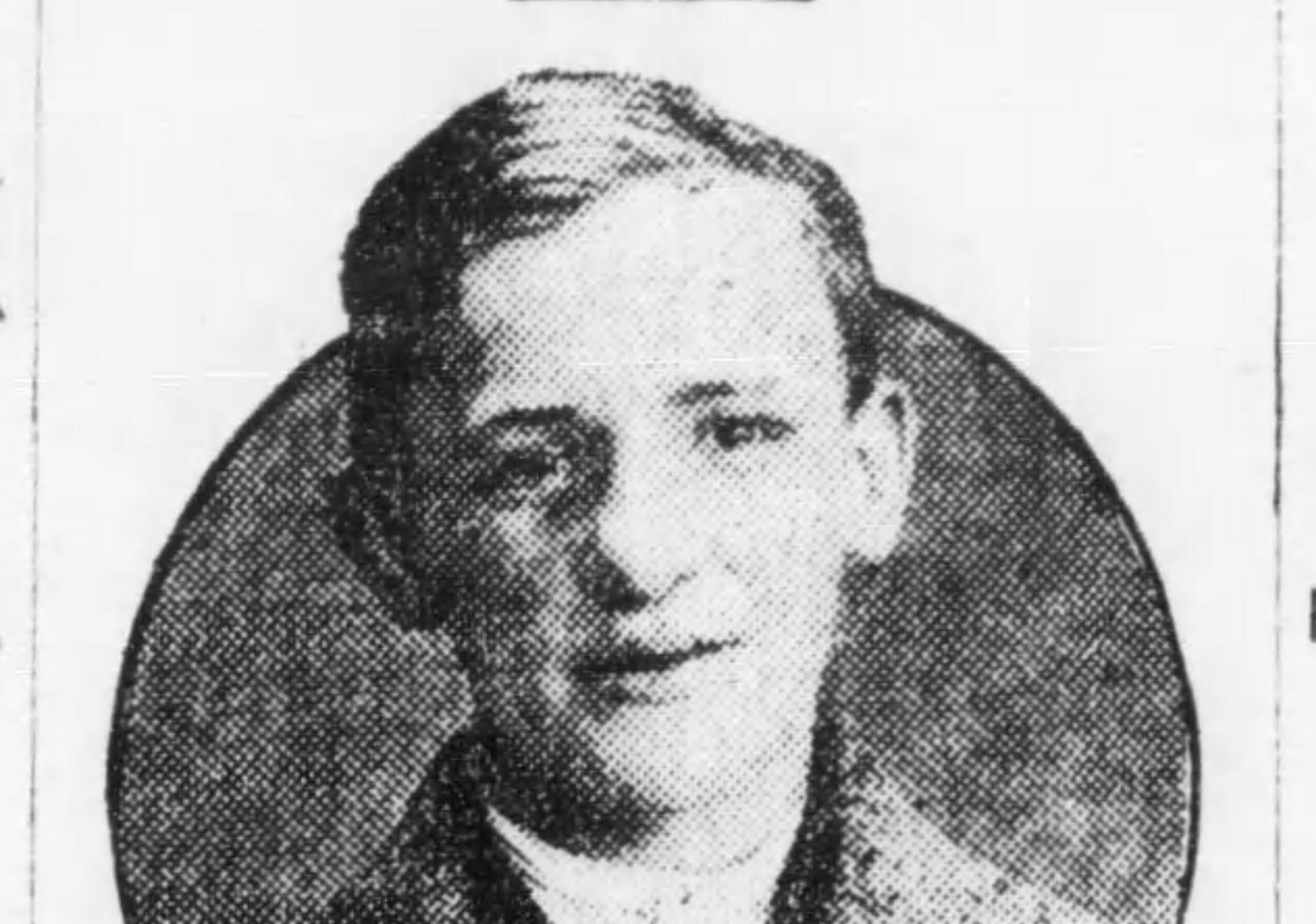
Some criminals just cannot reform. Young Raymond “Angel Face” Beck was a good example. 100 years ago today, the 14-year-old Brooklyn boy was pawning stolen silverware on Atlantic Avenue when the police happened into the pawn shop. NO JUVENILE ASYLUM BUILT COULD HOLD THE “ROBBER CHIEF” Known mostly for his escapes from “prison,” at the time, Raymond Beck, “son of well-to-do parents of 7 Cypress Avenue,” and a self-described “Robber Chief,” had broken out of the Dobbs Ferry Juvenile Asylum a total of four times by 1914. Each time young Beck, “blue-eyed, fair-haired and innocent-looking,” made a B-line directly for Brooklyn and the houses of new victims. Beck would make a career of illegal activity and escaping asylums and reform schools throughout his life. The newspapers are replete with his stories of burglaries and escapes at least through the mid-1920s, when he would finally disappear from the news. But, for the majority of this period, whenever the name Raymond Beck was mentioned in the papers, Brooklynites locked their doors and hid their valuables, as there was a good chance they’d end up in his possession. “ANGEL FACE” RETURNS TO BROOKYLN After the “boy burglar” had most recently been paroled in 1914, he ended up in Brooklyn once again – this time in the parlor of Edward A. Peterson of 567 Eighth Street in Park Slope. Now, Peterson did not know “Angel Face,” but that was not only because the two had never been introduced. Beck simply arrived at Peterson’s home […]
MACON STREET VS. CHARLIE CHAPLIN (1913)
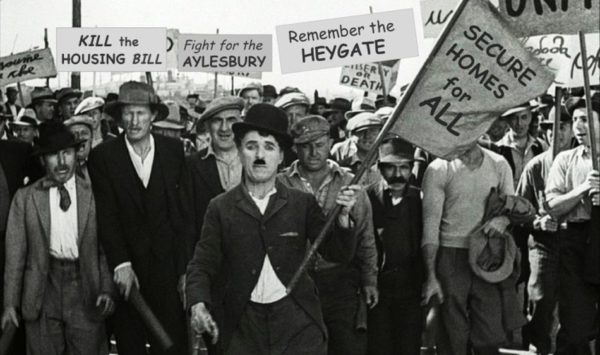
******************************************************************************************************************************** Brownstone Detectives investigates the history of our clients’ homes. The story you are about to read was composed from research conducted in the course of one of those investigations. Do you know the history of YOUR house? ******************************************************************************************************************************** In 1913, “Charlie Chaplin” was set to hit Bed-Stuy – in a big way. Let me explain. The residents of Stuyvesant Heights – 100 years ago – were concerned about any proposed construction developments that might encroach upon the way of life to which they’d grown accustomed. New people were moving into the neighborhood, new businesses opening up, and the residents felt they were losing control of what was going on around them. Specifically, they were justifiably troubled with the type of buildings the local developers might be planning to construct in their midst. In 1913, it was the movie houses. NOT IN MY BACKYARD! The construction of a “moving picture show” on Macon Street (near Lewis Avenue), was so unpopular, in fact, that its residents would take drastic measures against the proposal to build one “directly opposite the Public Library in Lewis Avenue.” The new theater was to go up on the northwest corner of Macon Street and Lewis Avenue, where a 3-story wooden structure (with a 2-story addition at back) had existed since the last century. Surrounded by their “fine residences,” the residents expected the lot to attract an establishment that would be more in keeping with the status of the neighborhood. When residents discovered, though, that the owners […]